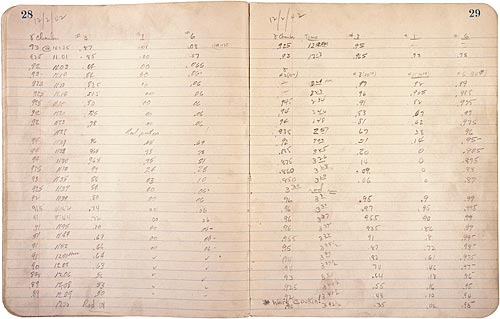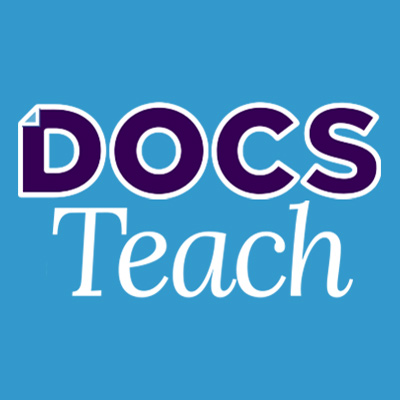
Manhattan Project Notebook (1942)
This notebook records an experiment of the Manhattan Project, the all-out, but highly secret, effort of the federal government to build an atomic bomb during World War II. Recorded here is the world's first controlled, self-sustaining nuclear chain reaction, achieved on December 2, 1942.
Eight months after the United States entered World War II, the federal government launched the Manhattan Project, an all-out, but highly secret, effort to build an atomic bomb – and to build one before the Germans did. The task was to translate the vast energy released by atomic fission into a weapon of unprecedented power.
On December 2, 1942, a group of distinguished physicists, working under top-secret conditions in an unpretentious laboratory at the University of Chicago, took a crucial step towards this goal: they created the world’s first controlled, self-sustaining nuclear chain reaction. Nobel prize-winning physicist Enrico Fermi directed the experiment.
Fermi directed the construction of a pile of graphite and uranium bricks and wooden timbers, assembled in the precise arrangement necessary to start and stop a nuclear chain reaction. Cadmium rods inserted into the pile regulated the nuclear reaction to prevent it from “burning” itself out of control. Had it not been controlled, the experiment could have released a catastrophic amount of energy, wreaking havoc in the middle of the densely populated city of Chicago.
“We’re cooking!” was the exuberant reaction recorded when the experiment succeeded. The data shown on these notebook pages is the record of the nuclear reactor’s response to the movement of the control rods.
Less than three years later, the first atomic weapon would be tested in New Mexico on July 16, 1945. Though originally created for potential use against Germany, the war in Europe ended on May 8, 1945. After a successful test at the Trinity site, President Truman decided to use two atomic weapons to end the war on the Pacific front. On August 6th and 9th, the United States dropped atomic bombs on the cities of Hiroshima and Nagasaki, leading to hundreds of thousands of deaths. Within days, Japan surrendered and World War II was over.
However, the creation of these new destructive weapons would intensify a new type of conflict – the Cold War between the two remaining global superpowers, the United States and the Soviet Union. When the Soviet Union tested their own atomic weapon in 1949, an arms race between the United States and the U.S.S.R. began.

